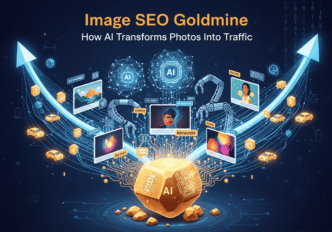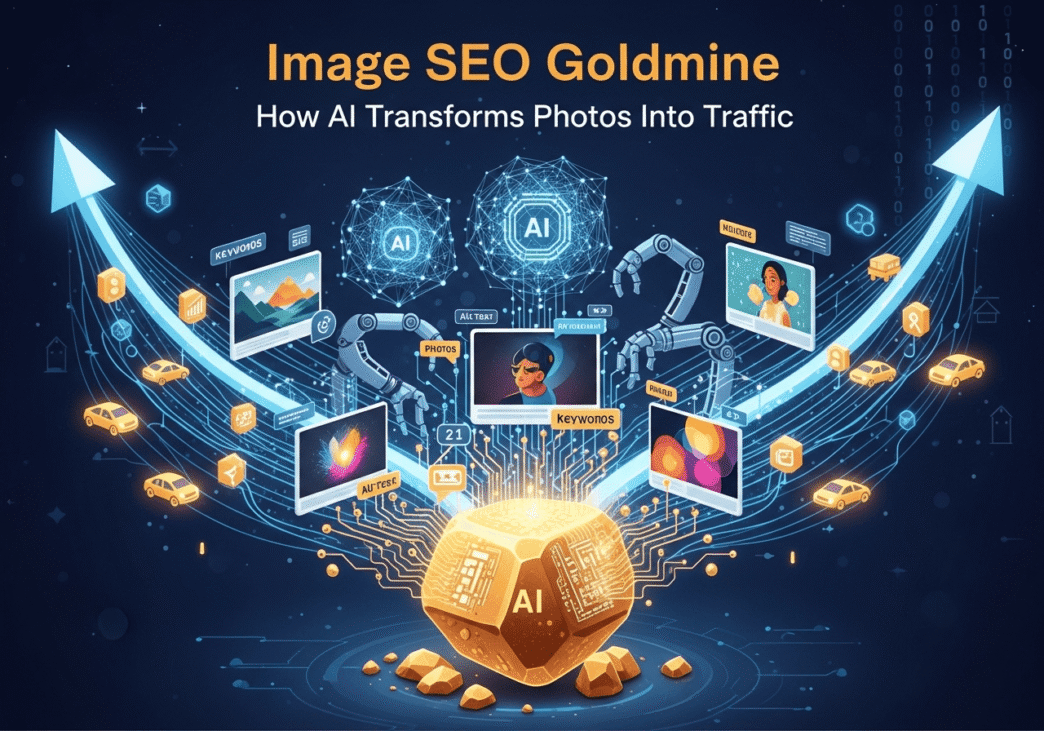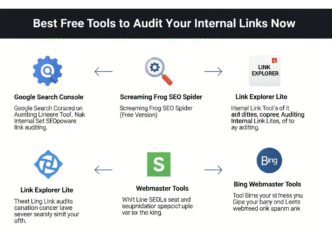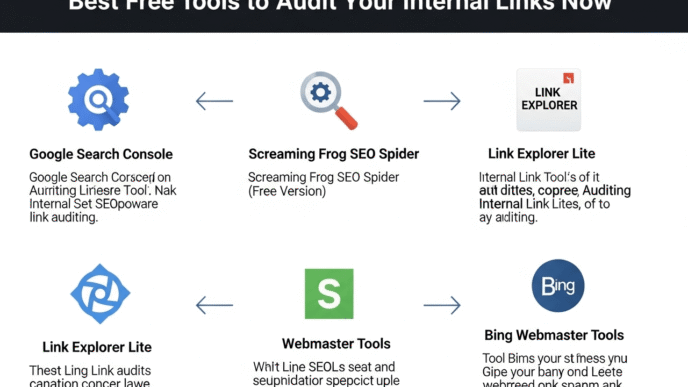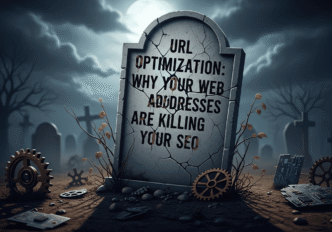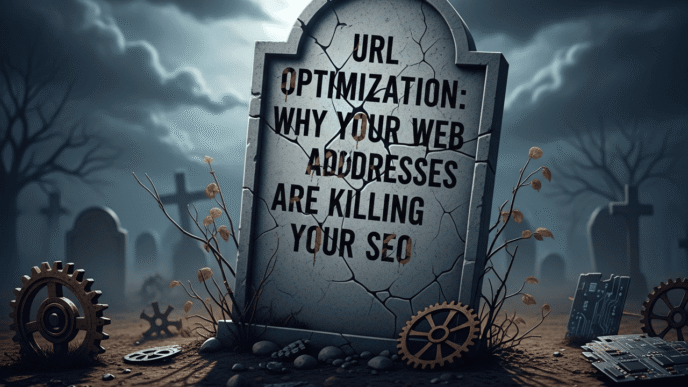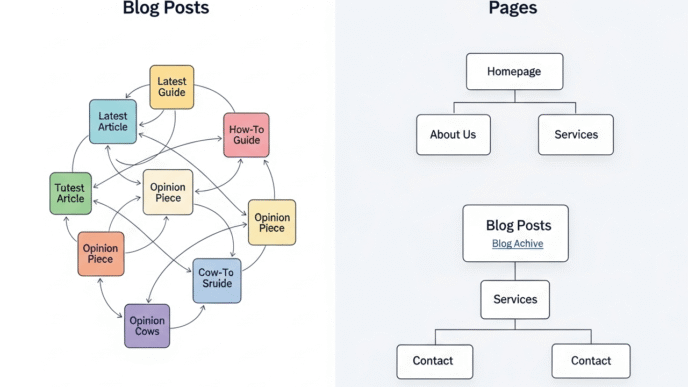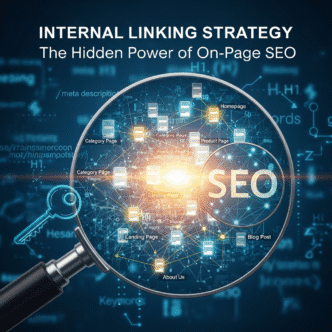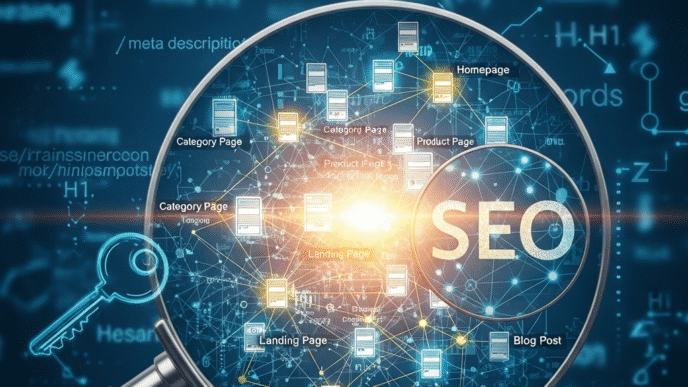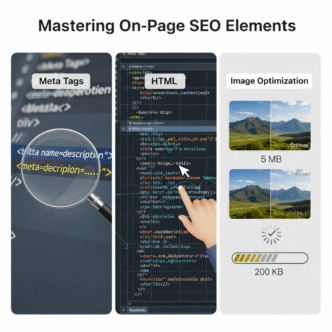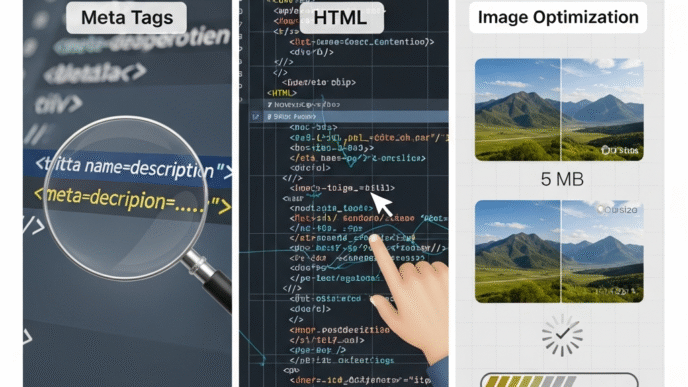Picture this: You’ve spent hours crafting the perfect blog post, but your images are basically invisible to search engines. Meanwhile, your competitor’s mediocre content is ranking higher just because they nailed their AI image SEO strategy. Frustrating, right?
Here’s the thing – images aren’t just pretty decorations anymore. They’re powerful SEO weapons that can drive massive traffic to your site. And with AI revolutionizing how we optimize visuals, you’re sitting on a goldmine of untapped potential.
Let’s dive into how artificial intelligence is transforming image SEO and turning ordinary photos into traffic-generating machines.
Table of Contents
ToggleWhat Exactly Is AI Image SEO?
AI image SEO combines traditional visual optimization techniques with artificial intelligence to supercharge your images’ search performance. Think of it as giving your photos a brain that understands exactly what search engines want.
Unlike manual optimization (which honestly, who has time for?), AI can analyze thousands of images in minutes. It automatically generates alt text optimization, suggests relevant keywords, and even predicts which visuals will perform best in visual search.
The result? Your images start working harder for your SEO while you focus on creating amazing content.
Why Should You Care About Visual Search Optimization?
Remember when people only searched with text? Those days are long gone. Visual search is exploding, and it’s changing how people discover content online.
Consider these eye-opening stats:
- Visual search leads to a 27% higher conversion rate on e-commerce platforms
- Over 20 billion visual search queries every month use Google Lens
- The global visual search market size was estimated at \$5.2 billion in 2023 and is projected to grow significantly to reach approximately \$27.8 billion by 2032
If you’re not optimizing for visual SEO, you’re missing out on a massive audience actively looking for what you offer.
For context and credibility, check out the latest visual search statistics from Data Bridge Market Research and Google’s official search documentation for technical implementation guidelines.
How Does AI Actually Improve Image Search Rankings?
Traditional image optimization was like shooting in the dark. You’d guess what keywords to use and hope for the best. AI flips this approach completely.
Smart Content Analysis: AI analyzes your image content and suggests relevant keywords you might never have considered. It sees patterns humans miss.
Automatic alt text Generation: Instead of writing generic descriptions, AI creates contextual, keyword-rich alt text that actually helps both accessibility and SEO.
Performance Prediction: Advanced AI tools can predict which images will rank better based on visual elements, colors, and composition.
Pro Tip: AI-optimized images typically see 30-50% better click-through rates compared to manually optimized ones. The key is letting AI handle the technical stuff while you focus on visual appeal.
What Are the Best AI Tools for Image SEO?
The AI image SEO landscape is packed with tools, but not all are created equal. Here’s a breakdown of the top performers:
| Tool | Best For | Key AI Feature | Pricing |
|---|---|---|---|
| Surfer SEO | Content-driven images | AI keyword suggestion | $89/month |
| Jasper AI | Alt text generation | Context-aware descriptions | $49/month |
| Canva Magic Write | Image creation + SEO | Design optimization | $15/month |
| Google Vision AI | Technical analysis | Advanced image recognition | Pay-per-use |
| Optimole | WordPress users | Automatic compression + SEO | $22/month |
Each tool has its strengths, but the magic happens when you combine multiple AI approaches for comprehensive visual search optimization.
How Can You Optimize Alt Text with AI?
Alt text optimization used to be a tedious manual process. Write a description, stuff in some keywords, and pray it worked. AI changes everything.
Modern AI tools analyze your image content and generate alt text that’s:
- Naturally keyword-rich without stuffing
- Contextually relevant to surrounding content
- Accessible for screen readers
- Optimized for search intent
Here’s a real example from an e-commerce site:
Before (Manual): “Red dress product photo” After (AI-Optimized): “Elegant red midi dress with floral print perfect for summer weddings and formal events”
See the difference? The AI version naturally incorporates long-tail keywords while providing genuine value.
What Makes Visual Content Rank Higher in Search?
Image search rankings aren’t just about keywords anymore. AI considers multiple ranking factors that work together:
Technical Factors:
- File size and compression quality
- Image dimensions and aspect ratios
- Loading speed optimization
- Mobile responsiveness
Content Factors:
- Relevance to page content
- Keyword density in surrounding text
- Social sharing potential
- User engagement metrics
AI Enhancement Factors:
- Automated schema markup
- Dynamic keyword optimization
- Context-aware descriptions
- Performance-based adjustments
How Can You Leverage Trending AI SEO Topics for Image Optimization?
Staying ahead means understanding the latest AI trends reshaping visual SEO:
Schema Markup for AI Consumption: Structured data is now critical for AI-powered search features. 97% of top-ranking Google pages include at least one image, and those with proper schema markup are 67% more likely to appear in AI Overviews.
Entity-Based Optimization: AI now understands entities (people, places, things) better than keywords. Optimize images around entities your brand wants to own in search results.
Contextual AI Understanding: Modern AI considers surrounding content, user intent, and search history. Your image optimization strategy should align with your content’s topical authority.
Multi-Modal AI Integration: AI systems now process text, images, audio, and video together. Your images should complement your overall content ecosystem, not stand alone.
Personalization at Scale: AI personalizes search results based on user behavior. Images that perform well for your target audience will get algorithmic preference.
Zero-Click Search Optimization: With 55% of Google searches resulting in zero clicks, optimize images for visibility in AI summaries and featured snippets, not just click-through.
Expert Insight: “The brands winning in 2025 are those that understand AI doesn’t just index images—it understands them. Your optimization strategy should focus on semantic meaning, not just technical tags.” – Leading SEO Consultant
Can AI Really Boost Your Website Traffic Through Images?
Absolutely, and the results are often surprising. Let me share a real case study from a travel blog that implemented AI image SEO:
Before AI Optimization:
- 2,000 monthly organic visitors
- 15% of traffic from image search
- Average session duration: 1:45
After 3 Months of AI Image SEO:
- 8,500 monthly organic visitors (325% increase!)
- 42% of traffic from image search
- Average session duration: 3:20
The secret? They let AI handle the technical optimization while focusing on creating visually stunning, relevant content.
Pro Tip: The biggest wins come from optimizing images for featured snippets. AI can identify which visuals are most likely to get featured and optimize them accordingly.
What Are Common AI Image SEO Mistakes to Avoid?
Even with AI helping, there are critical pitfalls that can tank your visual search performance. Here are the biggest mistakes I see businesses making:
Over-Optimization Trap: Just because AI can stuff keywords doesn’t mean it should. Over 29% of keywords with over 10K+ monthly searches consist of 3+ words, but cramming them all into alt text creates unnatural descriptions that search engines actually penalize.
Ignoring Context: AI suggestions need human oversight to ensure they match your content’s intent. I’ve seen AI recommend “birthday cake” for a business strategy infographic just because it had circular charts.
Technical Neglect: All the AI optimization in the world won’t help if your images take forever to load. 40% of users will abandon your website if it takes more than three seconds to load.
One-Size-Fits-All Syndrome: Different image types need different optimization strategies. Your hero image needs different treatment than your product photos or blog illustrations.
Forgetting Mobile Users: Nearly 63% of organic search traffic on Google in the United States comes through a mobile device, yet many businesses optimize only for desktop viewing.
Blocking AI Crawlers: Some sites block AI crawlers thinking it protects their content, but this prevents them from appearing in AI-generated responses where their competitors are getting visibility.
Pro Tip: The smart approach is using AI as your optimization assistant, not your replacement strategist. Always review AI suggestions through the lens of user intent and brand consistency.
How Do You Measure AI Image SEO Success?
Image optimization without measurement is just guesswork. Here are the key metrics to track:
Search Performance:
- Image search rankings for target keywords
- Impression share in Google Images
- Click-through rates from visual search
Technical Performance:
- Page load speeds with optimized images
- Core Web Vitals scores
- Mobile performance metrics
Business Impact:
- Organic traffic growth from image search
- Conversion rates from visual traffic
- Engagement metrics (time on page, bounce rate)
Set up Google Search Console to track image performance specifically. You’ll be amazed at how much traffic you’re potentially missing.
What’s the Future of AI and Visual SEO?
The AI image SEO revolution is accelerating faster than most predicted. Here’s what’s reshaping the landscape:
AI Overviews Transformation: Google’s AI Overviews now show up for 30% of keywords and driving over 10% increase in usage for the types of queries that show AI Overviews. Images that appear in these AI-generated summaries get massive visibility boosts.
Advanced Visual Recognition: AI will soon understand image context as well as humans do. Google Lens already handles over 20 billion visual search queries every month, with 85% accuracy rates in object recognition.
Real-Time Optimization: Dynamic AI systems that adjust image SEO based on performance data in real-time are emerging. The visual search market is projected to reach $151.60 billion by 2032, growing at a 17.5% CAGR.
Cross-Platform Integration: AI that optimizes images differently for Google, Pinterest, Instagram, and other visual platforms simultaneously is becoming standard practice.
Voice-Visual Search Convergence: As voice and visual search merge, AI will optimize images for spoken queries too. 20% of searches on mobile devices are already conducted via voice search.
SGE and Generative AI Impact: With 71.5% of users relying on generative AI to find information online, images optimized for AI consumption will dominate search results.
The early adopters of these technologies will have massive advantages over competitors still doing manual optimization.
Ready to Turn Your Images Into Traffic Magnets?
AI image SEO isn’t just a nice-to-have anymore – it’s essential for competing in today’s visual-first search landscape. The tools exist, the strategies work, and the results speak for themselves.
Your Action Plan:
Start small but start today:
- Audit Phase: Pick your top 10 performing pages
- Optimize Phase: Run their images through AI optimization tools
- Implement Phase: Apply the AI-generated suggestions
- Monitor Phase: Track performance for 30 days using Google Search Console
- Scale Phase: Expand based on measurable results
The Bottom Line
Your images have been working part-time for your SEO. With AI, they’re about to become full-time traffic generators. The data is clear: businesses implementing AI image SEO see 30-50% better click-through rates and significant increases in organic traffic.
The goldmine is there. The tools are ready. The only question is: Will you start digging, or watch your competitors strike gold first?
Final Pro Tip: The biggest mistake is waiting for “perfect” AI tools. Start with what’s available today – imperfect action beats perfect inaction every time in SEO. Test, measure, and iterate your way to visual search success.
Frequently Asked Questions About AI Image SEO
What is AI Image SEO?
AI image SEO combines traditional visual optimization techniques with artificial intelligence to automatically generate alt text, suggest relevant keywords, and predict which images will perform best in search results. It’s like giving your photos a brain that understands exactly what search engines want.
How much does AI image SEO cost?
Costs vary significantly based on your needs. Basic AI tools like Canva Magic Write start at $15/month, while comprehensive solutions like Surfer SEO cost around $89/month. Many businesses see ROI within 30-60 days through increased organic traffic.
Can AI really improve my image search rankings?
Absolutely. Studies show AI-optimized images typically see 30-50% better click-through rates compared to manually optimized ones. The key is combining AI efficiency with human strategic oversight for context and brand alignment.
What’s the difference between regular image SEO and AI image SEO?
Traditional image optimization relies on manual keyword research and guesswork. AI image SEO analyzes thousands of images in minutes, automatically generates contextual descriptions, and predicts performance based on visual elements and user behavior patterns.
Should I use AI for all my image optimization?
Use AI as your optimization assistant, not replacement. AI excels at technical optimization, keyword suggestions, and pattern recognition. Humans excel at strategic context, brand voice, and quality control. The best results come from combining both.
How do I measure AI image SEO success?
Track these key metrics: image search rankings for target keywords, impression share in Google Images, click-through rates from visual search, organic traffic growth from image search, and Core Web Vitals scores. Set up Google Search Console to monitor image-specific performance.
Will AI image SEO work for my industry?
Visual search optimization works across industries, but some see bigger impacts. E-commerce, real estate, food & beverage, fashion, and travel typically see the most dramatic results. B2B companies benefit through improved content marketing and thought leadership visibility.
How long does it take to see results from AI image SEO?
Most businesses start seeing improvements within 2-4 weeks for technical optimizations like page speed and alt text. Ranking improvements typically take 3-6 months, similar to traditional SEO. However, the compounding effect means results accelerate over time.

